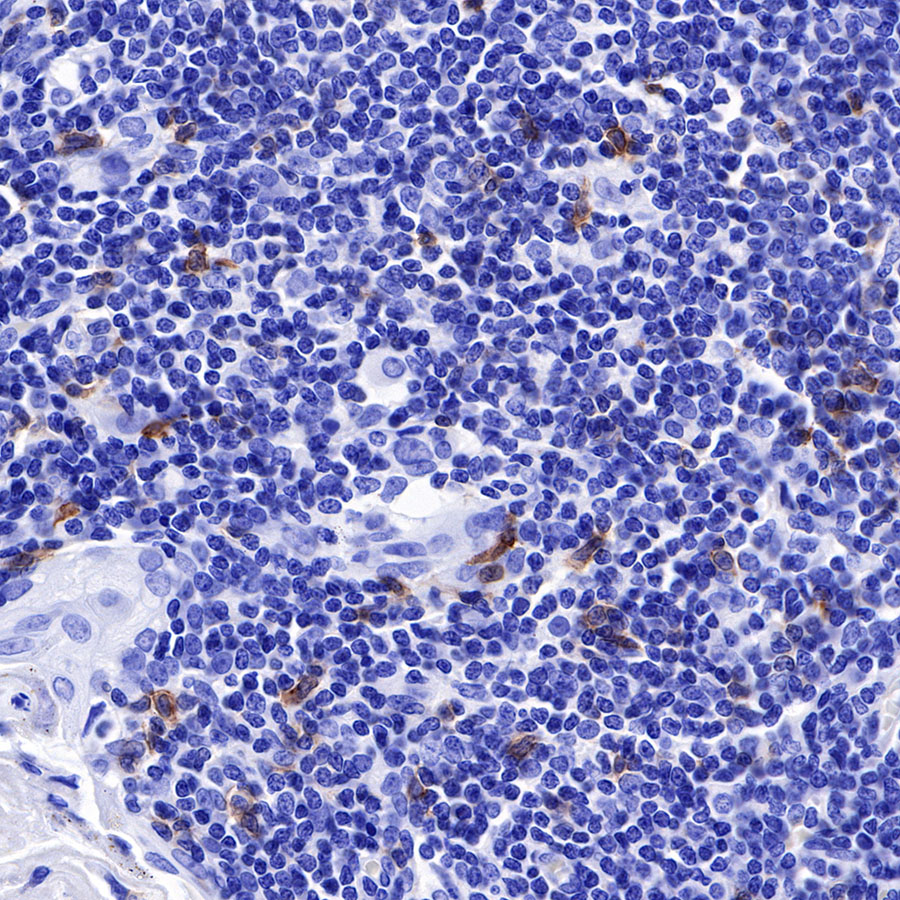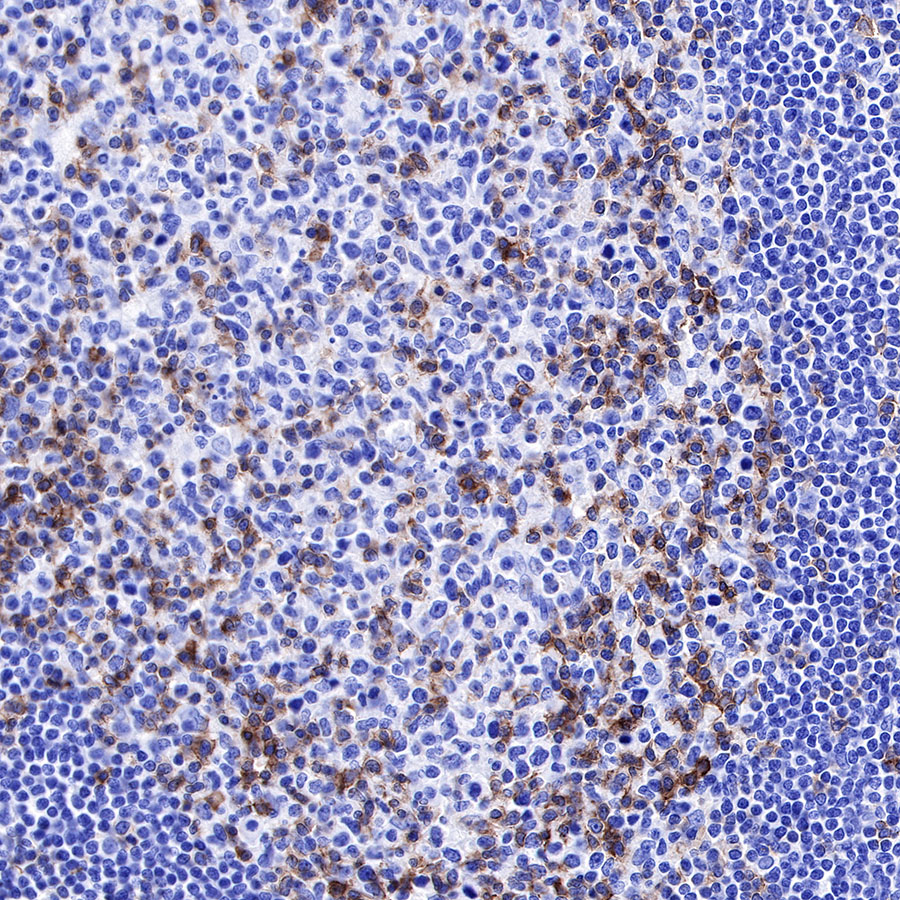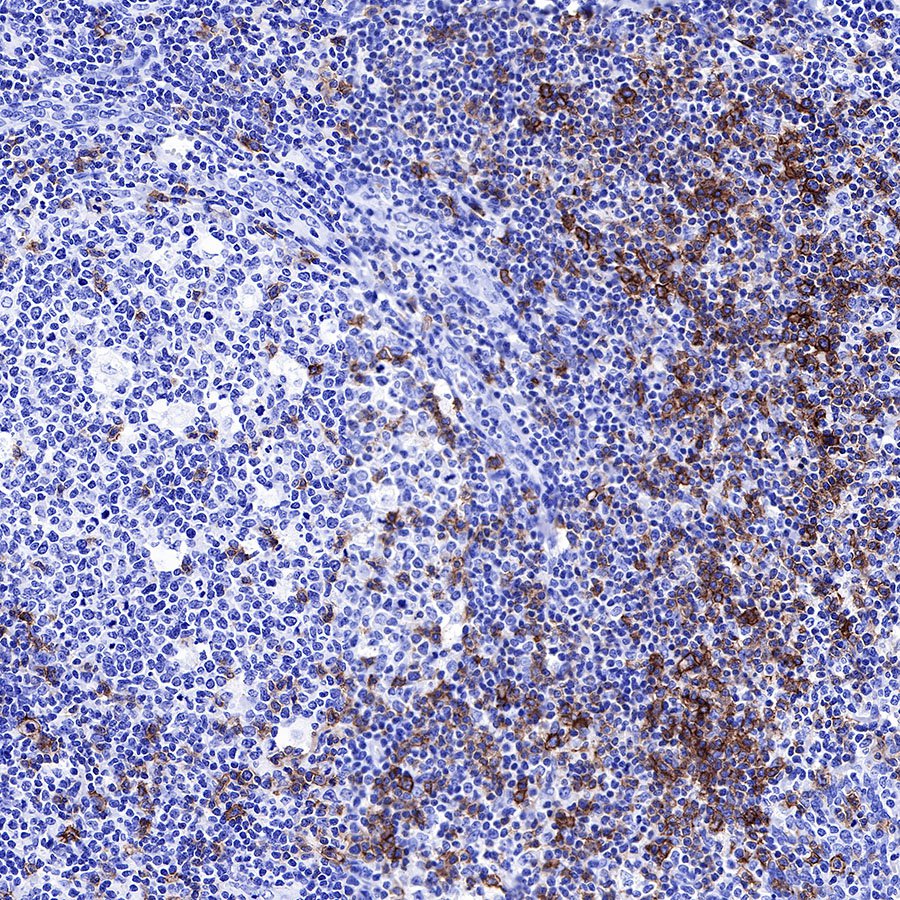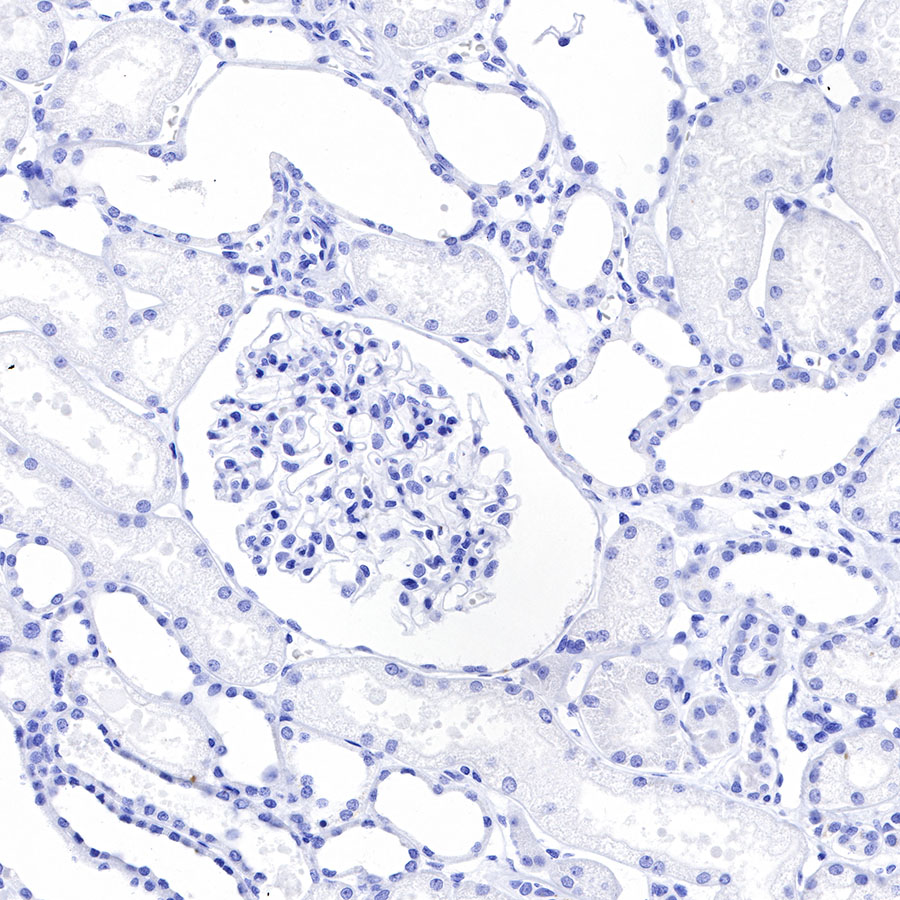













IHC-P
1:500

Inducible T cell costimulatory factor (ICOS, cluster of differentiation, CD278) is an activated costimulatory immune checkpoint expressed on T cells. Its ligand ICOSL was expressed in antigen-presenting cells and somatic cells (including tumor cells in the tumor microenvironment) [PMID: 28713380, PMID: 12800259]. As one of the most common targeted immune checkpoints, ICOS is considered a possible way to develop new immunotherapy [PMID: 29544515]. Some clinical studies shown that blocking ICOS alone can inhibit tumor growth and proliferation, as well as TIGIT, CTLA4, and PD-1 [PMID: 30232519, PMID: 28803728].


参考图片
IHC shows positive staining in paraffin-embedded human thymus. Anti-CD278/ICOS antibody was used at 1/500 dilution, followed by a HRP Polymer for Mouse & Rabbit IgG (ready to use). Counterstained with hematoxylin. Heat mediated antigen retrieval with Tris/EDTA buffer pH9.0 was performed before commencing with IHC staining protocol.
IHC shows positive staining in paraffin-embedded human tonsil. Anti-CD278/ICOS antibody was used at 1/500 dilution, followed by a HRP Polymer for Mouse & Rabbit IgG (ready to use). Counterstained with hematoxylin. Heat mediated antigen retrieval with Tris/EDTA buffer pH9.0 was performed before commencing with IHC staining protocol.
IHC shows positive staining in paraffin-embedded human tonsil. Anti-CD278/ICOS antibody was used at 1/500 dilution, followed by a HRP Polymer for Mouse & Rabbit IgG (ready to use). Counterstained with hematoxylin. Heat mediated antigen retrieval with Tris/EDTA buffer pH9.0 was performed before commencing with IHC staining protocol.
Negative control: IHC shows negative staining in paraffin-embedded human kidney. Anti-CD278/ICOS antibody was used at 1/500 dilution, followed by a HRP Polymer for Mouse & Rabbit IgG (ready to use). Counterstained with hematoxylin. Heat mediated antigen retrieval with Tris/EDTA buffer pH9.0 was performed before commencing with IHC staining protocol.









 用小程序,查商品更便捷
用小程序,查商品更便捷







 危险品化学品经营许可证(不带存储) 许可证编号:沪(杨)应急管危经许[2022]202944(QY)
危险品化学品经营许可证(不带存储) 许可证编号:沪(杨)应急管危经许[2022]202944(QY)  营业执照(三证合一)
营业执照(三证合一)